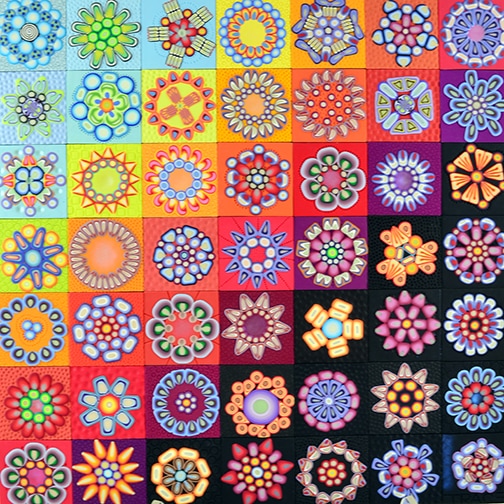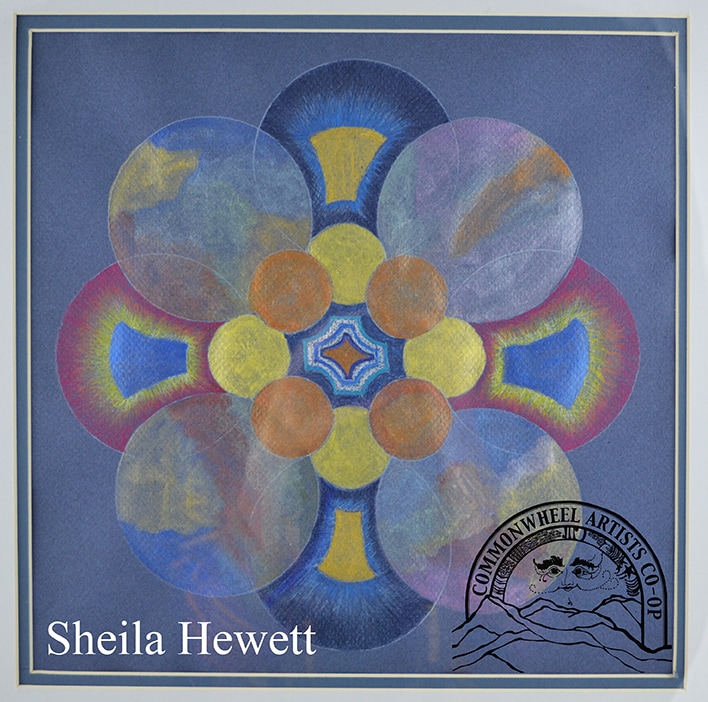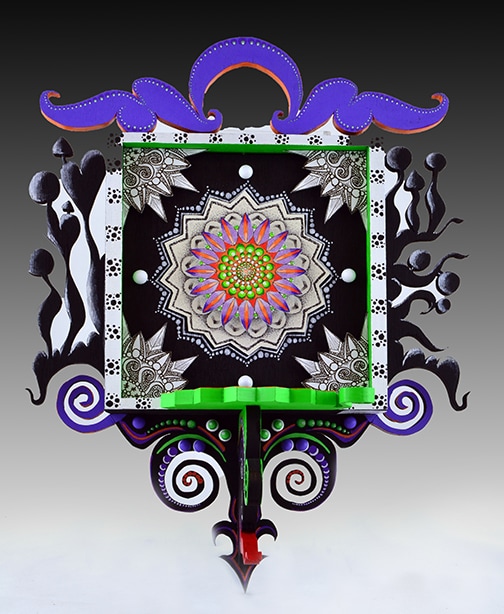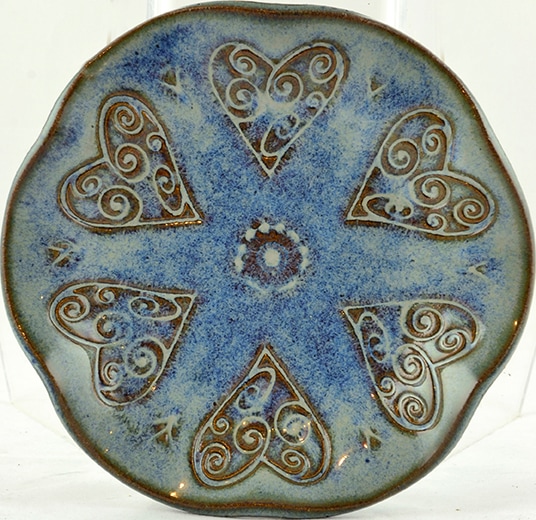|
by Leti Wesolowski We put out a call for mandala-related art and our local artists stepped up to the challenge. The “Mandala” show currently in our gallery is the result. 17 artists brought in mandala-related art from diverse points of views and inspiration—from patterns of nature, symbols from different cultures, colors, and the practice of centering and meditation. The works explore multiple medias but all embody the concept of “mandala”: fused glass; watercolor; digital photography; bronze, silver, and copper; precious metal clays; mixed media; stained glass; laser-cut wood; hand stamped clay; polymer clay; engraved terracotta; vinyl records; color pencil drawings; and more. We invite you to contemplate mandalas made by local artists and discover which one evokes feelings of peace, balance, unity and strength that resonate with you. Let them work their magic on your life and allow your mind to wander into the beauty of mandalas. “Mandala” comes from a Sanskrit word that means “circle or disc”. In art, mandala is often a symbolic pattern usually in the form of a circle within a square divided into four symmetric sections containing a unifying center from which geometric shapes and symbols radiate outwards. “The mandala is an archetypal image whose occurrence is attested throughout the ages. It signifies the wholeness of the Self.” —Carl G. Jung, Memories, Dreams and Reflections Embraced by many religions and cultures around the world, a mandala represents wholeness and the connection between inner self and outer reality. “In Christianity, there are a number of sacred images and ritual invocations that use the circular shape to connect the spiritual realm with the earthly realm”, says figurative sculptor Marica Hefti. “The placement of divine beings, angelic figures, and holy personages at crucial positions within the circular (stained glass) windows (of Christian cathedrals) establishes the powerful storyline of Christian beliefs”. Hindus were one of the first people to use mandalas as spiritual tools. Native Americans use mandalas as shields of good luck, prosperity, wealth and happiness. Buddhist monks create sand mandalas, a process that takes days to create, then sweep it and pour it into a river, to symbolize the never-ending cycle of life. “A concept of new beginnings, forms of life itself” says Tracey Eastland when asked to explain what a mandala means to him. Mandala is used in spiritual practices as a focal point for meditation, self-awareness, and healing. For digital photographer Teri Rowan, a mandala is “meant to inspire meditation and introspection” or can be admired for just its beauty. Metalsmith Kathleen Krucoff thinks a mandala is “a beautiful symbol to convey positive messages of encouragement and support”. In art, mandala has become a generic term for any diagram, chart, or geometric pattern that represents the center of the universe, metaphysically or symbolically. For Jewelry artist Connie Lorig, a mandala represents “a complex dance between unity and diversity, between the parts and the whole.” For artist Sheila Hewlett, mandala means the continuity of life. Commonwheel artist Julia Wright takes pictures of nature during her hikes and then edit them on her computer to create hypnotic mandalas. Designing a mandala is a unique personal experience in which the individual lets the creative mind to run free and find the symphony of shapes, colors and patterns to represent their unique sense of self and view of reality. Sculptor m.jo hart says “mandalas represent the process and meditation involved in creating her work”, which is focused on women’s issues, unique stories and experiences. Mandalas can be created by individuals to symbolize their journeys through life, their state of mind or to tell their personal story. Some of our artists got inspired by Celtic art, such as lampwork artists Jon Murray and Amanda Shotts who incorporate in their mandala barrettes “a circular pattern that has no beginning and no ending, signifying infinity of love!” Or Glass artist Sabine Wachs who “was drawn to the Celtic spiral mandalas used as symbols of the sun powering all life”. Jeweler Mary Cowdery got inspired by the yin-yang symbol, repetition and balance. Artist Ray Jordan loves bright whimsical colors. His biggest inspiration is combining bright colors with his love of painting, drawing and cutting wood. Kendrick Cowdery has a strong desire to maintain peace in his life. His handmade mandala lamp is built on mat board using a laser cutter and colorful translucent paper. Several artists took it as a chance to explore new themes and materials, such as mosaic artist Juanita Canzoneri who jumped at the opportunity to play with alcohol inks and raid her stash of stained glass. She found that, during the process, mos of her work reminded her of an art form from her childhood in eastern Pennsylvania. Others worked in new themes with their primary media, such as potter Jennifer Hanson who creates mandalas on her clay dishes with different hand stamps. Or illustrator and mixed media artist Kelly Green who finds that vinyl albums automatically lend themselves to the mandala format. Creating a mandala can be an enriching personal experience. To draw a mandala, one starts by “drawing the circle, setting an intention, centering through a meditation, usually start at the “bindu” sacred center and follow inspiration that comes” explains Mandala instructor Anne Roe. She sees mandalas “as “windows to the soul”, sacred circles and opportunities for the soulful self to express authentically”. Sometimes mandalas are created to evoke feelings of peace and contentment on the observer. Kathleen Krucoff, for example, wanted her pieces to “help the wearer feel empowered” focusing in tranquility and strength. Ray Jordan wanted to “bring a smile to the art viewer mind and make them think”.
4 Comments
|
Juanita Canzoneri
|


















 RSS Feed
RSS Feed